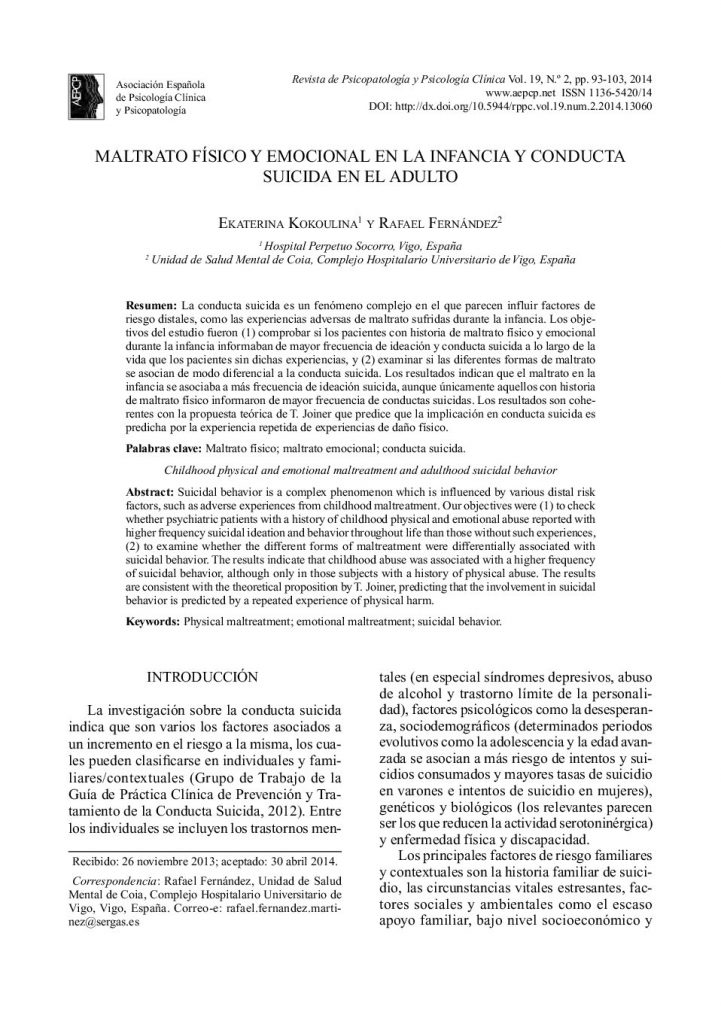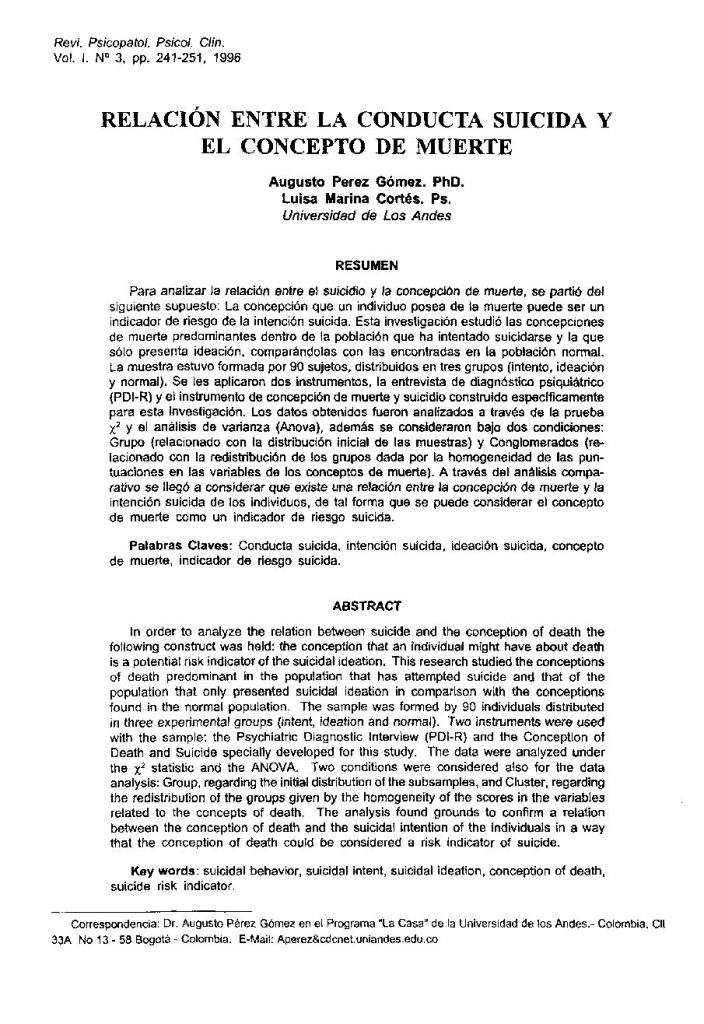Maltrato físico y emocional durante la infancia y conducta suicida en el adulto.

- Predicción del burnout en los docentes: Papel de los factores organizacionales, personales y sociodemográficos.
- Maltrato físico y emocional durante la infancia y conducta suicida en el adulto.
- Directed forgetting in major depression.
- Impacto de la sintomatología interiorizada y de las disfunciones ejecutivas en el rendimiento académico en educación primaria.
- Análisis de la emotividad negativa en mujeres víctimas de violencia de pareja: La culpa y la ira.
- Patrón asociado a la inasistencia a la primera consulta de un centro de salud mental.
Suicidal behavior is a complex phenomenon which is influenced by various distal risk factors, such as adverse experiences from childhood maltreatment. Our objectives were (1) to check whether psychiatric patients with a history of childhood physical and emotional abuse reported with higher frequency suicidal ideation and behavior throughout life than those without such experiences, (2) to examine whether the different forms of maltreatment were differentially associated with suicidal behavior. The results indicate that childhood abuse was associated with a higher frequency of suicidal behavior, although only in those subjects with a history of physical abuse. The results are consistent with the theoretical proposition by T. Joiner, predicting that the involvement in suicidal behavior is predicted by a repeated experience of physical harm.
La conducta suicida es un fenómeno complejo en el que parecen influir factores de riesgo distales, como las experiencias adversas de maltrato sufridas durante la infancia. Los objetivos del estudio fueron (1) comprobar si los pacientes con historia de maltrato físico y emocional durante la infancia informaban de mayor frecuencia de ideación y conducta suicida a lo largo de la vida que los pacientes sin dichas experiencias, y (2) examinar si las diferentes formas de maltrato se asocian de modo diferencial a la conducta suicida. Los resultados indican que el maltrato en la infancia se asociaba a más frecuencia de ideación suicida, aunque únicamente aquellos con historia de maltrato físico informaron de mayor frecuencia de conductas suicidas. Los resultados son coherentes con la propuesta teórica de T. Joiner que predice que la implicación en conducta suicida es predicha por la experiencia repetida de experiencias de daño físico.




